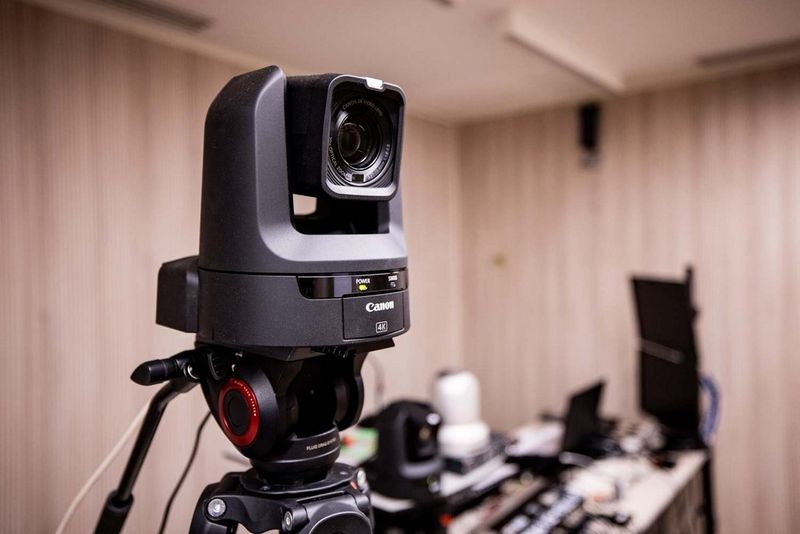Contents
Speaking about how to keep your residence and workplace secure, everyone understands the importance of system security and has installed anti-virus software and firewalls. But what about surveillance cameras?
The PTZ camera enters the picture due to its exceptional video recording powers as well as its capacity to pan, spin, and zoom, providing it with much more versatility than a regular camera. The cameras’ head sections may swivel in various directions, feature a tilting function, and a PTZ camera feature with an optical 20x zoom. The operation of cameras might be mechanical or individual. It also cuts down on the number of cameras needed to record diverse viewpoints.

What Are PTZ Cameras?
PTZ (Pan-tilt-zoom) cameras have motorized pieces that enable them to rotate left to right, bend vertically and horizontally, and magnify in and out of an area. They are often used to observe large wide spaces that need a 180- or 360-degree vision, and they are installed in security towers where active employees can manage them through a remote camera console. They can also be programmed to autonomously track body-movement activities or stick to a pre-defined routine, relying on the camera or programming.
A PTZ streaming camera is typically used in conjunction with a wider monitoring system, with the PTZ tracking motion whereas a fixed camera can take precise images.
Benefits And Drawbacks Of PTZ Security Cameras
PTZ cameras need to get analyzed in terms of the tasks for which they can be used.
These cameras provide the following drawbacks:
Drawbacks:
Reduced Lifespan: As the PTZ cameras have many mechanical components (such as motors to the pan, tilt, and zoom), they are much less resilient than static systems. The overall cost of maintenance is generally higher than the purchase price of the camera due to its poor track record. Moreover, the camera is assembled by using micro injection molding which makes it expensive.
Narrow Viewpoint: The cameras can not capture places or regions in which they are not pointing, which would be a key drawback that leads to coverage gaps. Cameras can pan, rotate, and focus to capture large regions, but not at the same time. Occurrences can happen, and invaders can sneak through the cracks in the camera’s range of vision unnoticed.
Very Costly: In several circumstances, a single or more fixed camera (including the fisheye lenses) can provide more vision at a low price than a single PTZ camera. To describe better, a 4K fisheye panoramic camera can be designed to span the very same region as a PTZ camera while also allowing virtual zooming on high-resolution video without the danger of getting adjusted improperly.
Greater Risk Of Breakdown: Improperly mounted PTZ cameras can cause problems from both the technical and regulatory aspects. On the technical aspect, camera gear that is not properly placed may misbehave during varying atmospheric situations. On the regulatory front, PTZ cameras that incorporate even an inch of land in their range of vision may find the operator and owner in extreme difficulty.
Let us now discuss the benefits of this sort of camera.
Benefits:
Vast Range Of View: It is recommended to use PTZ cameras in conjunction with static cameras to monitor a large area to eliminate surveillance gaps. Cameras can rotate in any direction from 180 degrees of tilt and 360 degrees of pan, based on the type. An automatic pan and tilt is another feature of some systems that enables footage to be edited after capturing, but the output video would be grainier and in reduced resolution.
Time-Based Automatic Scanning: PTZ cams can be set up to rotate automatically in a sequence while scanning designated areas. It is possible to configure specific sets to move in response to timing. To record areas such as banks or rooms having gun safe vaults, a PTZ camera, for instance, can be set to pan, tilt, or zoom once every 30 seconds.
Remote Controlled: Traditional PTZ cameras can be remotely controlled and mechanically modified to look for unusual activities. As a result, viewers can alter the camera’s range of vision without physically visiting the spot. It follows a robotic command that enables you to define precise objectives, as well as the camera’s intelligent installed command, which will handle the movement, focusing, and shifting of settings.
Zoom functionality: Most PTZ cameras have optical zooming, which is used to see and snap distant subjects like faces or number plates. The highest focusing range divided by the lowest focus range is known as the optical zoom (that is, 20x, 30x, 40x); the higher the figure, the greater the magnification.
Also Read: Tips for Editing Your Game Videos
Conclusion
The cameras can be turned up to 360 degrees, magnified in and out, and controlled mechanically or manually. This enables a single camera of this type to replace multiple cameras aimed in diverse directions at once.
Using a specific remote controller with a joystick and keys that let you choose between different camera functionalities, you can directly operate PTZ cameras.

Leave a Reply